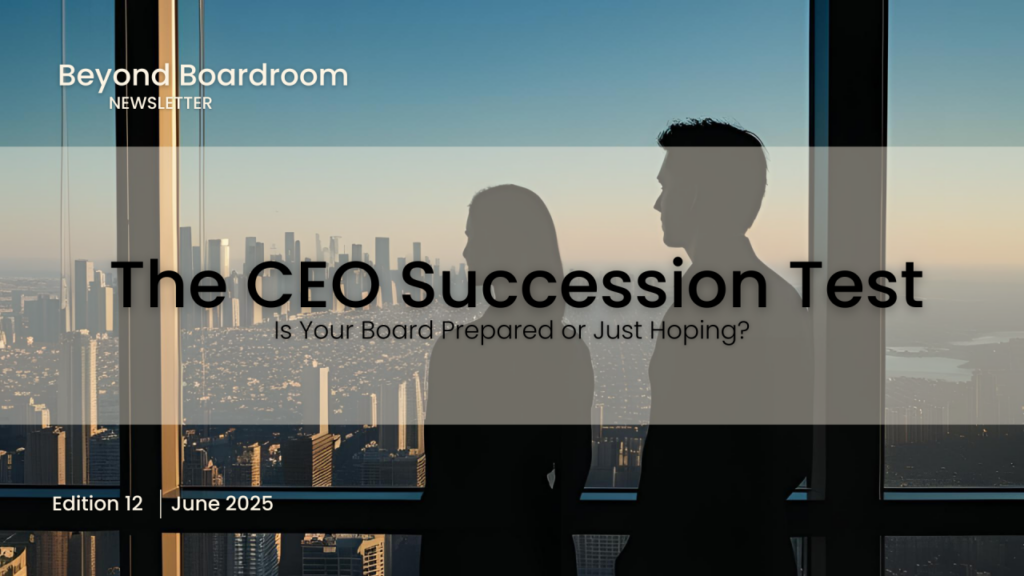When the leadership of a high-profile charity dissolves en masse, it draws public attention — and rightly so. The recent resignations at Sentebale, including both of its co-founders and the board of trustees, have sparked headlines and speculation. While the full details remain confidential and the subject of ongoing legal developments, the situation offers a broader opportunity for reflection.
This is not a comment on any individual, nor a judgement on the specifics of the case. The matters under review deserve the discretion and rigour they are due. Rather, this is a call to look beneath the surface — at what happens to governance when trustee relationships falter.
Because when boards break down, it is not only the trustees who feel the impact. It is the mission, the staff, and the stakeholders who stand to lose the most.
Trustee Dynamics: The Quiet Engine of Governance
Trusteeship is not a ceremonial role. At its best, it is an active stewardship — part strategy, part scrutiny, part service.
What is often missed in public discourse is that governance problems rarely erupt overnight. They build slowly, often silently, through a mix of misalignment, unspoken tension, and breakdowns in communication. When the boardroom becomes a place of distrust, even the most meaningful mission can lose its footing.
As the UK Charity Governance Code reminds us , effective governance is built not just on structures and skills, but on behaviours — transparency, inclusivity, and clarity of role. When these are lacking, the risk of fracture increases, particularly in organisations with complex leadership histories or evolving strategic direction.
BBC News reported the resignations amidst concerns over “disagreements about the charity’s direction,” underlining how internal governance issues can quickly become public. Meanwhile, The Sunday Times investigated the underlying tensions around control and founder influence.
This is why at Beyond Governance , we stress that trustee dynamics are not ancillary to governance — they are the governance.
The Founder’s Dilemma™: Legacy Meets Liability
Founders are central to many organisations’ success stories. They provide the energy, reputation, and belief that catalyse change. But as organisations grow, the governance model must mature accordingly.
This transition — from personality-led to institutionally grounded — is one of the most delicate shifts any charity will face. It requires clarity of role, limits of influence, and, critically, a board with the strength to uphold its fiduciary duty independently of profile or precedent.
Stanford’s work on this tension in corporate leadership offers helpful parallels, though the accountability stakes in charitable governance differ significantly. These are structural dynamics seen across the sector, and they demand foresight, humility, and the courage to evolve.
Stanford’s research on “The Founder’s Dilemma” in corporate contexts applies just as well in the non-profit world.
Governance Resilience™: A New Standard for the Sector
What often separates stable organisations from those in distress is not their vision — it is the resilience of their governance. This means more than policies or procedures. It means a board culture that can absorb change, navigate conflict, and make decisions in service of the long-term interest of the charity.
Drawing from frameworks such as those developed by the OECD on institutional resilience, governance resilience is the capacity to stay aligned in turbulent times. It involves:
• Regular board self-assessment
• Clear succession pathways for founders and chairs
• Well-defined escalation procedures for conflict
• A culture that welcomes scrutiny and disagreement constructively
It is also, importantly, about equipping trustees to recognise and address early signs of systemic strain before they escalate.
A Final Word: Governance Without Assumptions
As the situation at Sentebale continues to unfold, it serves as a reminder that governance must not rest on assumptions — about leadership, about cohesion, or about clarity. While the specific facts of this case remain contested and ongoing, the lesson for others is not in the details, but in the design.
When trustee relationships collapse, the cost is not reputational alone — it is organisational. And the longer issues go unspoken, the harder it becomes to recover.
For those of us working in governance, the aim is not to assign blame. It is to build systems strong enough to withstand disagreement, transition, and scrutiny — and to do so in a way that protects the integrity of the mission.



